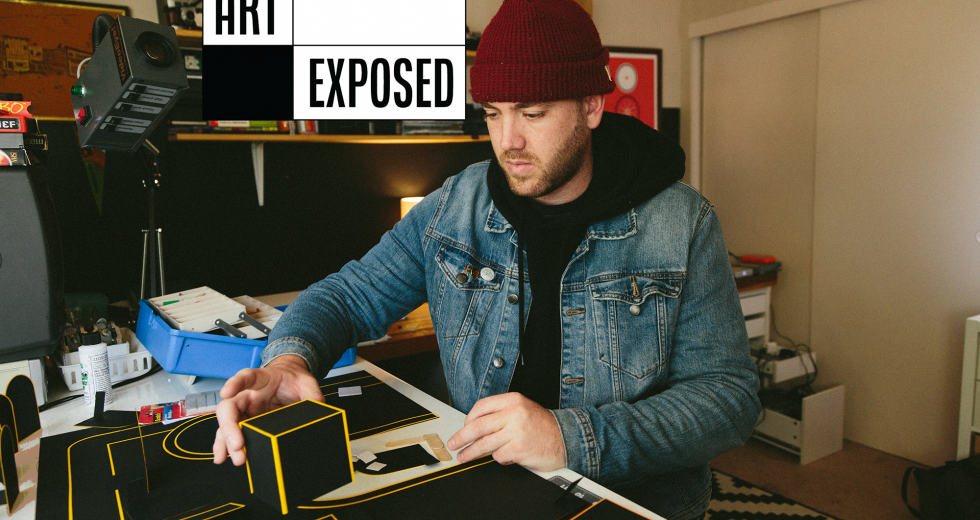Jonathan Joiner doesn’t like doing things the easy way. A digital artist of many mediums, he enjoys a challenge, and doesn’t mind if projects “take forever.” Such is the rigorous, attentive attitude the content creator applies to his art, which includes filmmaking, stop-motion animation, GIFs, papercraft, and all manner of whimsical, handmade gadgets born from his nostalgia-soaked imagination.
Much of Joiner’s artistic output is filtered through a vintage lens, influenced by the tones, styles and machines of yesteryear. His proclivity for nostalgia has led him to create props like “a futuristic memory-erasing helmet” (designed for rapper Fauni Figueroa’s music video), a life-size Rubik’s cube, and a ghastly-yet-gorgeous tablescape of odd food pairings shot in the style of 1970s cookbooks. The latter began as a rejected pitch to a client; Joiner partnered with a food stylist to execute it as a personal project.
Joiner delights in mining vintage electronics for parts and Frankensteining them together to create bizarre new objects. One of his signature moves is to graft his original papercraft designs onto the bodies of old cameras, then bring the pieces to life by animating them with stop motion techniques.
Joiner designed a “futuristic memory-erasing helmet” for rapper
Fauni Figueroa’s music video.
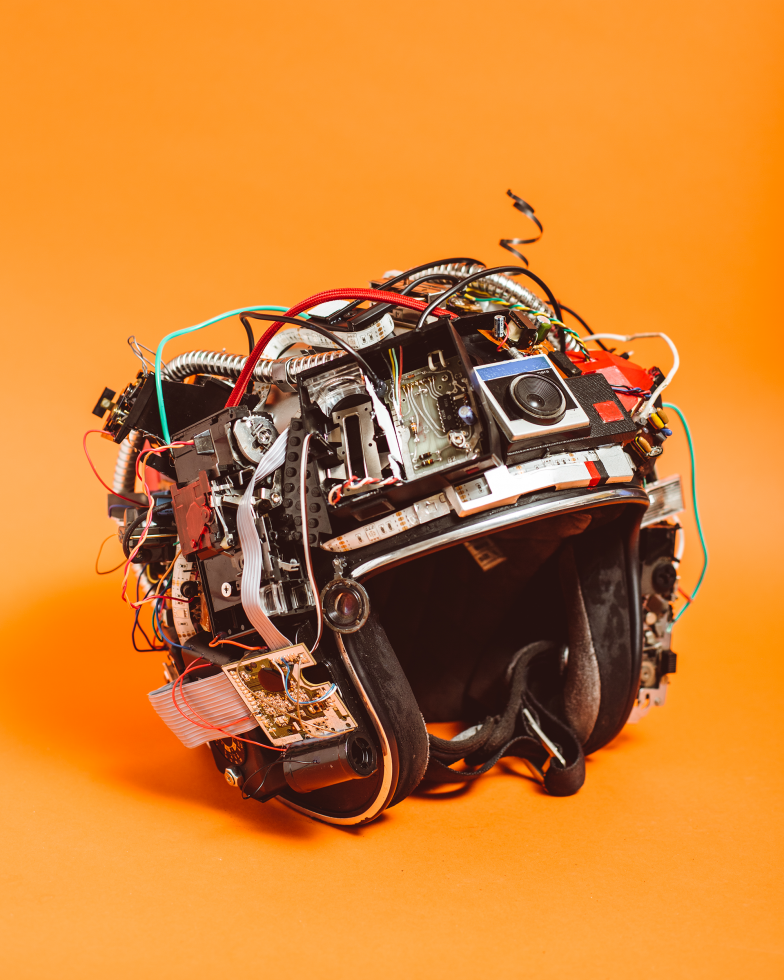
Joiner uses his garage to build playful, flamboyant objects,
which he films to create stop-motion videos and gifs.
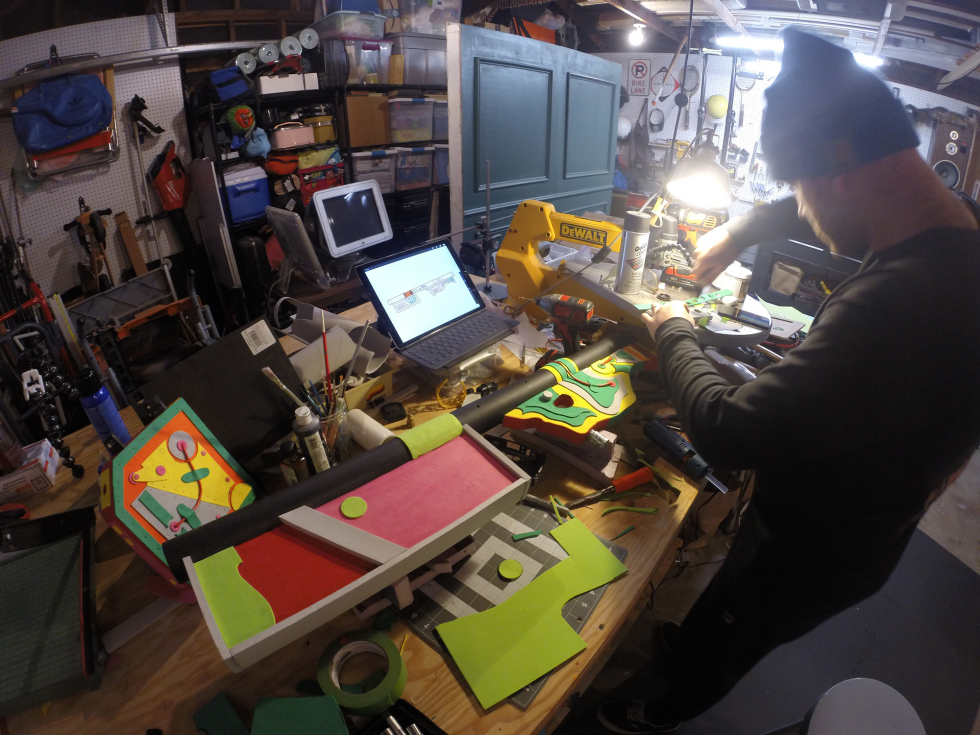
Art and commerce have a way of melding together for Joiner who, after studying cinematography and film and video production at Sacramento State, spent the last decade creating video content for brands like Social Club hard seltzer. He is currently a content creator at Fathom, where one of his clients is Nick Jr. The concept for the show he produces is to recreate shows like “Paw Patrol” and “The Loud House” in a “shot-for-shot” style, “with hands playing with toys and recreating the episode.” Joiner says the technique is a big hit with kids on YouTube. He shoots the content in his garage using toys, small props and custom builds. Much of Joiner’s work can be found on his website.
You’ve said you’re a “maker, builder and creator.” When did all of your interests and skills start to merge together to create the video artist you are today?
My parents kind of just let me explore. When I got bored with a toy, I would take the toy apart and see what was inside and see how it worked. I think that was a huge introduction to crafting and that whole space.
I remember growing up and building forts and tree houses. My dad would take me to construction sites where they would have all the scrap wood piled in front, and we would take a bunch of scrap wood to my backyard and build a fort out of it. I think having those skills early on gave me more confidence to build things and figure things out.
A childhood spent taking toys apart to see how they worked helped
Joiner lay the creative foundation for crafting and building.
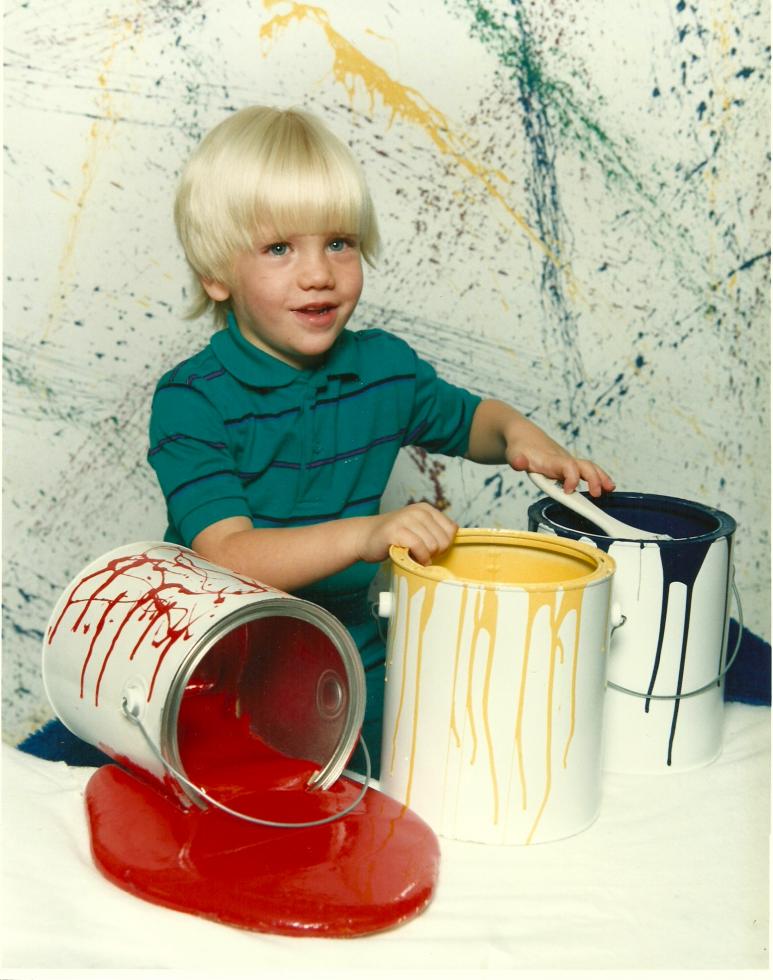
I think art was first introduced to the mix when I was in high school. I took a couple different art classes and painted different things and started to build 3D sculptures and different things. Once I went to college, I began taking more art classes and design classes. That’s where I learned, oh, this can be a job.
There’s such a sense of fun and silliness in your work, though it seems quite technical. To what do you attribute your unpretentious yet sophisticated sensibility?
I love comedy, I love laughter and joking around. I don’t want to take myself too seriously when it comes to creating work. And growing up with the internet and seeing how YouTube has latched onto funny content. (I’m influenced by) phrases from overheard conversations that are just hilarious to me and implementing that into art.
The technical side of it is just part of me trying to challenge myself to learn a new technique and apply it to whatever piece or client work that I’m doing, and then just combining those two things together to make the work.
Some of your work borrows influences, colors, styles or technologies from previous decades. What draws you to the past? What does art with a vintage vibe inspire in you?
I think it’s that feeling of nostalgia, that association with those old things you had in your house growing up and the memories you have of those particular things.
A behind-the-scenes snapshot of the camera backpack Joiner built
for the Band iDKHOW used in the “Leave Me Alone” music video,
directed by Raul Gonzo.
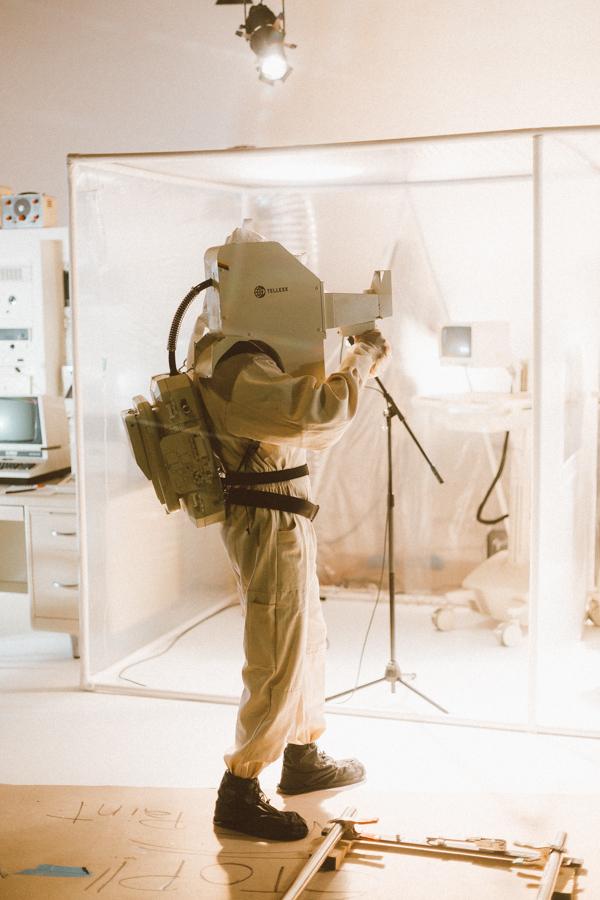
I think I always gravitate towards those objects because they’re part of my past, and I love to kind of incorporate them into the work that I do, whether that’s animating a Polaroid camera or making a helmet out of old parts.
When you’re building props and strange objects (like the memory-erasing helmet), where do you look for inspiration? Film? Your imagination? Dreams?
Taking apart and reimagining electronics is part of the
filmmaker’s artistic process.
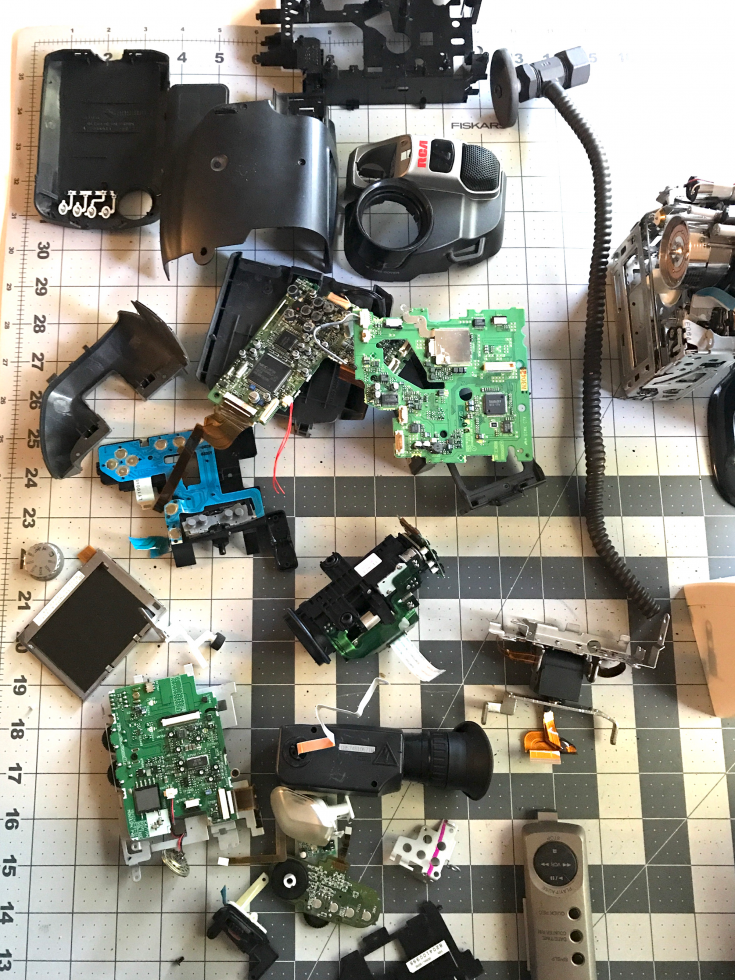
How does being the hearing child of two deaf parents influence the way you approach life and interpret the world around you?
Growing up with deaf parents, you grow up a little faster than your peers, because you kind of know everything that’s going on. Once you’re old enough to communicate, you’re more of an interpreter for your parents at times. You kind of just know everything that’s happening in life.
Sign language in itself is such a visual language. It’s tactile and, for me, that’s where having to use my hands to talk is something that kind of influenced me wanting to be a maker and using my hands to create things. So I think there’s some correlation between the two — just having this visual language and using your hands to create art and make work. It’s about the hands but there’s also a lot of facial expressions and body language involved in it. It’s basically your voice.
Your work is so digital, and yet one of your mediums is papercraft. How did you come to it, and is it as challenging as it looks?
I discovered papercraft (through an artist) in Amsterdam that I follow, and I was blown away by how it looks so complicated and how it looks 3D, but it was all practical. I just love anything practical. So I just got a Cricut paper cutter and started finding templates online on how people make these 3D objects. I did a bunch of digging, and fell in love with it.
Papercraft, the medium of cutting and stitching paper together to
create three-dimensional objects, is one of the creative
director’s favorite ways to illustrate his videos.
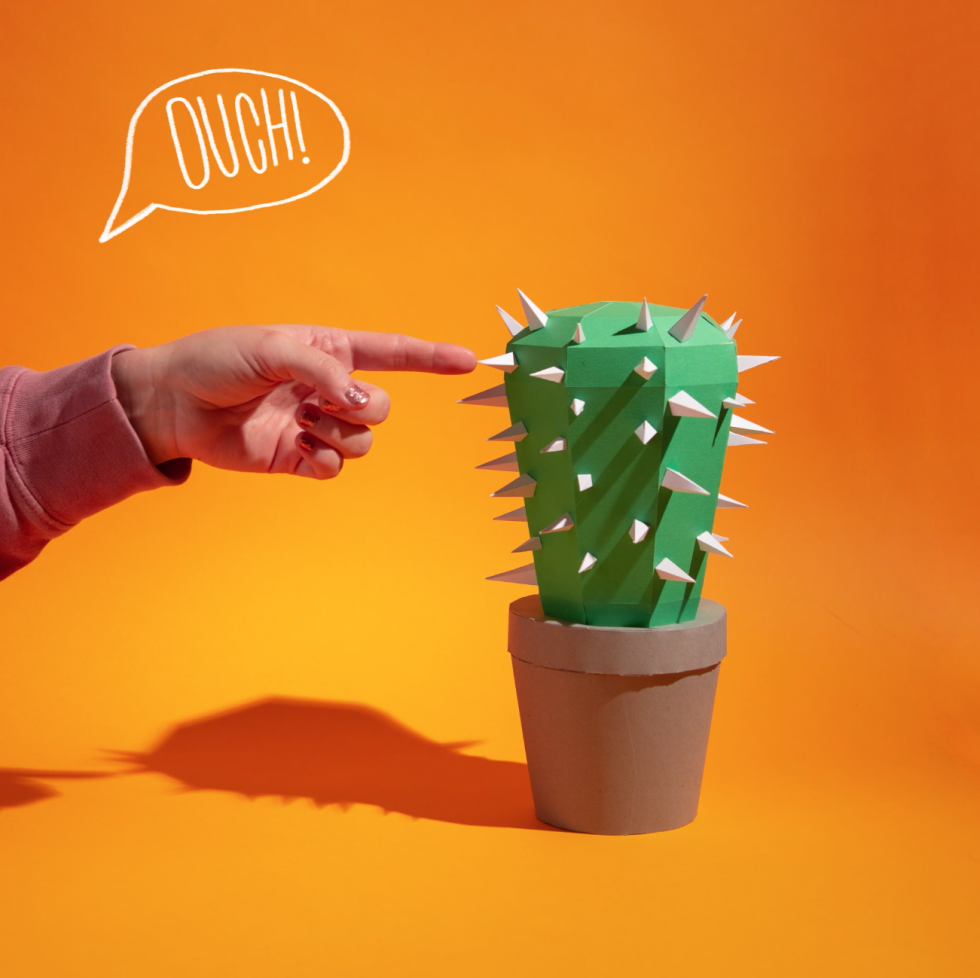
What have you gained from each of your agency experiences? How is it going being a freelance creative?
The digital artist fuses together old monitors, dismantled
objects and Home Depot supplies to build one-of-a-kind creations.
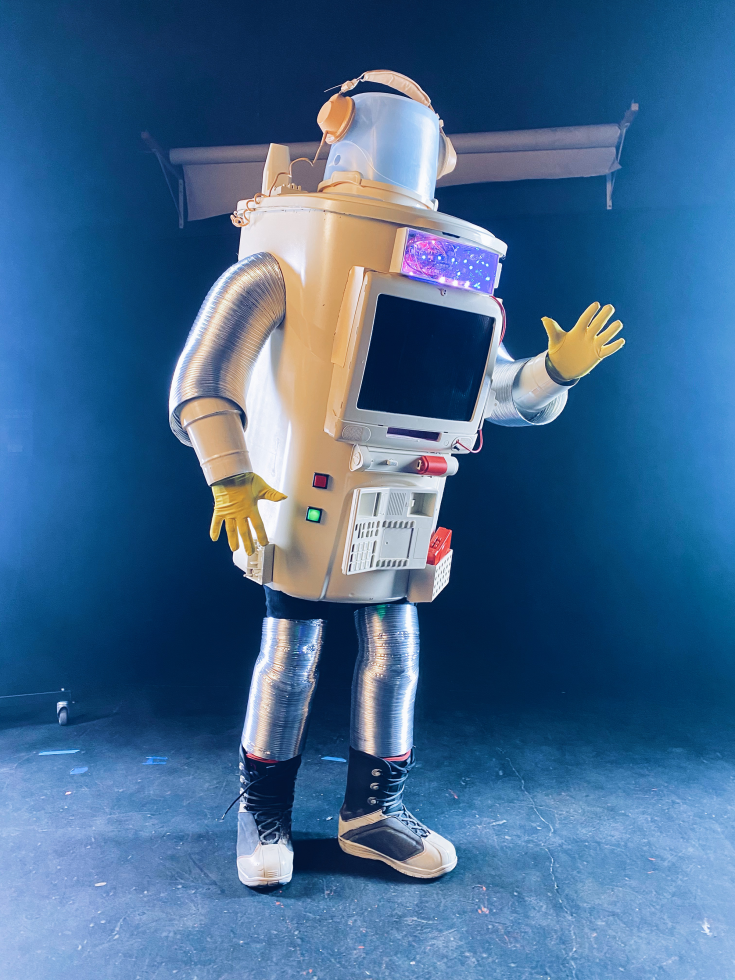
When I follow a routine, I wake up early and do some work for myself when I’m fresh. I got this notebook that helps you break down “What are the top three things I need to do today?” You break it down into 25-minute increments and you focus on deep work for 25 minutes, take a break for five minutes, and then jump back into it for 25 minutes. Once I started using that kind of approach, I started feeling like, okay, I’m making stuff, I’m finishing things.
Edited for length and clarity.
–
Stay up to date on art and culture in the Capital Region: Follow @comstocksmag on Instagram!
Recommended For You
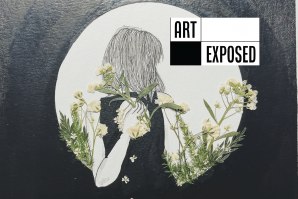
Art Exposed: Sarah Marie Hawkins
Multimedia artist Sarah Marie Hawkins uses a variety of methods
to tell not just her story, but the stories of many women.
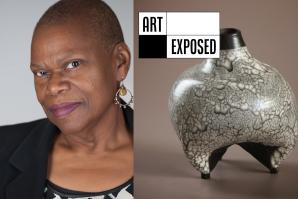
Art Exposed: Deborah Pittman
A professional clarinetist broadens her creative output with
ceramics, writing, filmmaking, multimedia performances — and
puppets.
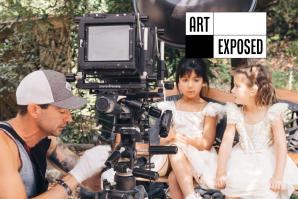
Art Exposed: Dan Herrera
Photographer and college professor Dan Herrera appreciates
the art of using older or alternative methods in his work; some
of his techniques date back 200 years or more.
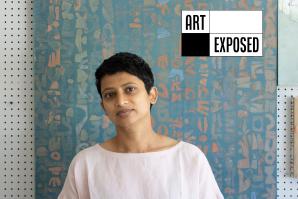
Art Exposed: Binuta Sudhakaran
How this artist focuses on mindfulness over capitalism in her abstract minimalist paintings
Sudhakaran calls her work abstract minimalism, and she
applies paint to canvas in layers, creating an ethereal effect
that suggests movement and contemplation.



